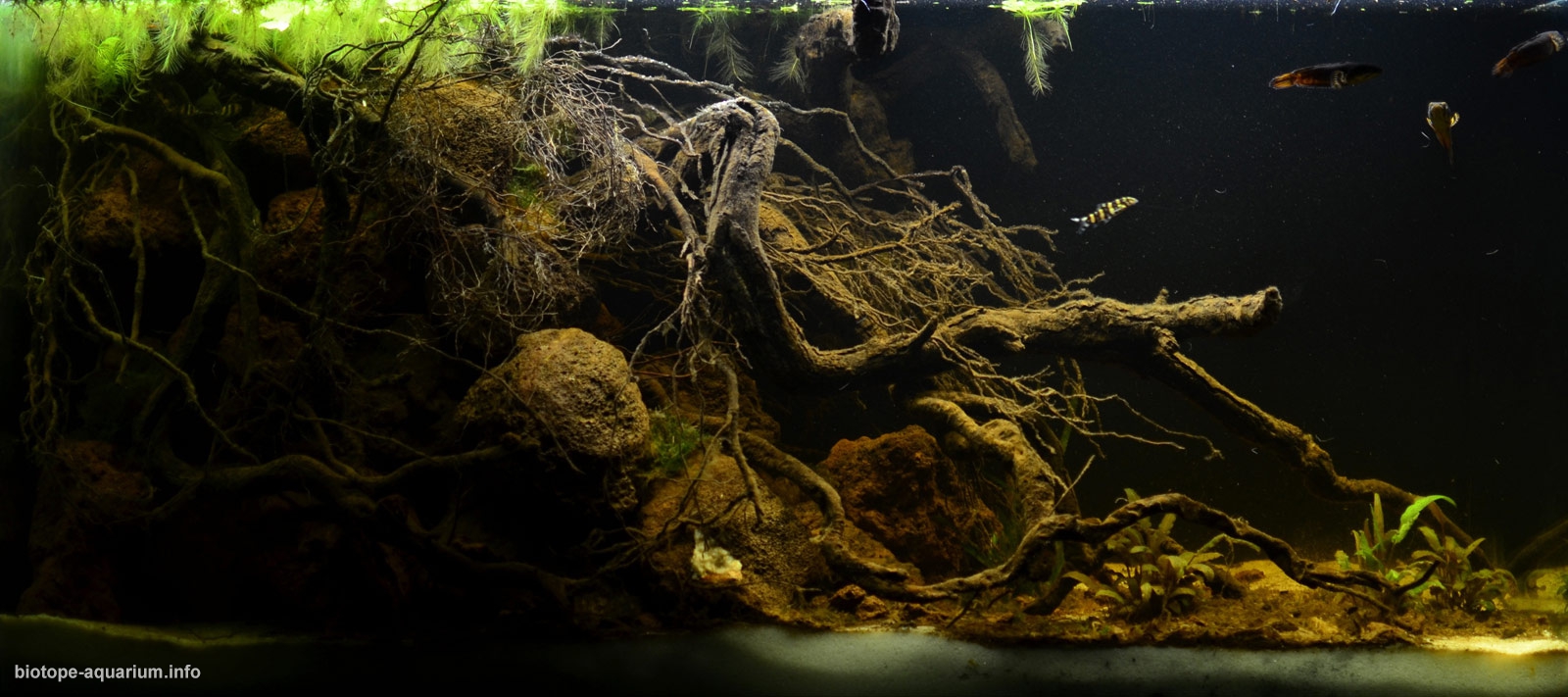Thandwe creek – Rakhine, Myanmar
The 8th place in the qualifying stage of the Biotope Aquarium Design Contest 2015
![]() Greece. Christos Nikolakoulis
Greece. Christos Nikolakoulis

Volume: 390 L
List of fishes: Channa pulchra, Botia kubotai
List of plants: Ceratophyllum demersum, Pistia stratiotes, Cryptocoryne albida, Vallisneria spiralis, Lemna minor, Vesicularia dubyana
Biotope description: The aquarium was set up based on a biotope of Thandwe creek of Rakhine in Myanmar. This is a slowly running medium size creek in the formerly Arakan State on Myanmars western coast bordered by Chin State (in the north) and in the east by the so called divisions Magway, Bago and Ayeyarwady, by the Bay of Bengal in the West and the Chittagong divison of Bangladesh in the northwest. From the north runs a very mountains region south across the State were it rains often, the valleys are filled with creeks, lakes and immense rice fields, coco and palm plantations. Very few fishes are known from this part of Myanmar. There is some aquatic vegetation in those creeks and lakes, mostly Nymphaea species, Ceratophyllum and Najas, Nitella and Salvinia, Riccia and other floating plants can be found. The snakeheads live not in deep habitats, the water is mostly clear, but after a heavy rain all is turbid. The ground is often leaf-litter and gravel, black and white stones in some areas.

True piece of Nature. You have managed to create authentic creek biotope, with every tiny root in correct place to experience wilderness in your home. Congratulations.
Great biotope!!! I loved the second picture, because I could feel the great depth sense and the majesty of this layout. Healthy fishes and well chosen.

It is a very realistic entry, but the marginal area is too large, which is more suitable for a river. If the marginal area was smaller, there would be more space to make the biotope even more interesting.

Great cross-section of a creek bank, although there is not much depth to it. The muddy-looking fine roots tangled up with the muddy-looking rocks of the shore are very authentic. So too are the Pistia trapped among the roots at water’s margin. There is a nice, steep slope from right to left and the roots follow this contour as they would in nature. It is telling that the Botia and Channa are comfortable enough to swim out in the open, knowing they have instant hiding spots among the roots and stones.
